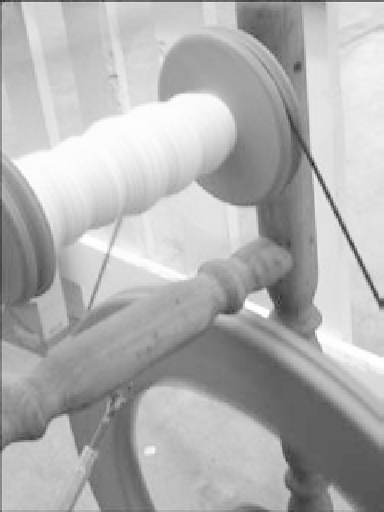Agriculture Reference
In-Depth Information
Cultivating and Choosing Good Fleece
When assessing your flock's potential, you can safely assume that you will only be able to use about
half of what you shear from your animals. If you are looking at plant production for spinning,
you will need a significant portion allotted for growing or you will put all that work in for a single
scarf! This chapter focuses mainly on animal fibers, but most of the dyeing and spinning principles
will apply to plant products as well.
Handspun fibers are a treat to work with and create beautiful, valuable products.
(Photo courtesy of Theresa Armit)
For good, useable fiber, there are a number of factors. The number one, obvious thing to watch for
is cleanliness. However, don't judge a sheep by its outer coat! Animals exposed to the elements—
such as alpaca, who love to roll around in the dust—will likely have some unappealing qualities at
first glance.
You will not use all the wool or fur, so know where to look and know that you will most likely be
giving the fleece a good wash before working with it.
When selecting a fleece or monitoring an animal for their quality growth, you are looking for the
general size (measures both length in inches and width in
microns
), color, elasticity, and character
of the fiber. These elements will all factor in to the way it spins up, and there are benefits to many
different types, depending on what you are looking for.














